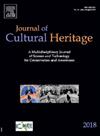Development of cement industry, technology, and artistic applications: a historical overview of the Portuguese case within an international context
IF 3.3
2区 综合性期刊
0 ARCHAEOLOGY
引用次数: 0
Abstract
The development of the cement industry and technology was a significant driver of progress in construction and artistic applications. Between the late 19th and 20th centuries, cement-based mortars and concrete were widely used in both utilitarian and artistic heritage, serving as structural materials and decorative ornaments. This paper presents a historical overview of the Portuguese cement industry within an international framework. It traces the evolution of modern hydraulic binders from the 18th-century experiments with clay-rich limestone and pozzolan to the 19th-century development of artificial hydraulic lime and major improvements in production processes, kiln design, and chemical analyses, resulting in the standardization of modern artificial Portland cement. These advancements shaped the adaptation and industrialization of cement in Portugal, and marked a gradual transition from natural to artificial cement around the turn of the century. Cement binders imported from England and France continued to dominate the Portuguese market well into the 20th century, even after national production began in the second half of the 19th century.
While current research on modern cement heritage often focuses on built structures, this study highlights the cultural significance of cementitious public art. It explores the transition from functional to artistic uses of cement, particularly during the 19th and 20th centuries, through selected case studies that reflect the different techniques and mortar formulations, as well as international influences on Portuguese cementitious heritage. An early example is the Teatro Nacional de São João, where ornaments created with cement-based mortars reinforced with steel bars and metal mesh reflect the influence of French engineering and the pioneering work of Joseph Monier. By contextualizing the Portuguese case within broader technological and artistic trends, this study contributes to a deeper understanding of cementitious heritage and emphasizes the need for further research on Portuguese cement-based artworks from the 20th century. The findings reveal compositional variations and applications that often relied on evolving techniques and experimental mortar formulations. Thus, understanding the material and technical evolution of cement-based mortars, as well as the cross-cultural exchanges that have shaped their use, is essential for the effective preservation and appreciation of this understudied part of modern heritage.

水泥工业、技术和艺术应用的发展:国际背景下葡萄牙案例的历史概述
水泥工业和技术的发展是建筑和艺术应用进步的重要推动力。19世纪末至20世纪,水泥基砂浆和混凝土被广泛用于实用和艺术遗产,作为结构材料和装饰装饰品。本文介绍了葡萄牙水泥工业在国际框架内的历史概况。它追溯了现代水力粘合剂的演变,从18世纪对富含粘土的石灰石和火山灰的实验,到19世纪人工水力石灰的发展,以及在生产过程、窑设计和化学分析方面的重大改进,最终导致现代人工波特兰水泥的标准化。这些进步塑造了葡萄牙水泥的适应性和工业化,并标志着在世纪之交从天然水泥逐渐过渡到人工水泥。从英国和法国进口的水泥粘合剂一直主导着葡萄牙市场,直到20世纪,甚至在19世纪下半叶开始国内生产之后。虽然目前对现代水泥遗产的研究往往集中在建筑结构上,但本研究强调了水泥公共艺术的文化意义。它通过选择反映不同技术和砂浆配方的案例研究,以及对葡萄牙水泥遗产的国际影响,探索了水泥从功能到艺术用途的转变,特别是在19世纪和20世纪。一个早期的例子是奥约奥国家剧院,在那里,用钢筋和金属网加固的水泥砂浆制成的装饰品反映了法国工程的影响和约瑟夫·莫尼尔的开创性工作。通过将葡萄牙的案例置于更广泛的技术和艺术趋势中,本研究有助于更深入地了解水泥遗产,并强调对20世纪葡萄牙水泥艺术作品进行进一步研究的必要性。研究结果揭示了成分的变化和应用往往依赖于不断发展的技术和实验砂浆配方。因此,了解水泥基砂浆的材料和技术演变,以及影响其使用的跨文化交流,对于有效保护和欣赏这一未被充分研究的现代遗产部分至关重要。
本文章由计算机程序翻译,如有差异,请以英文原文为准。
求助全文
约1分钟内获得全文
求助全文
来源期刊

Journal of Cultural Heritage
综合性期刊-材料科学:综合
CiteScore
6.80
自引率
9.70%
发文量
166
审稿时长
52 days
期刊介绍:
The Journal of Cultural Heritage publishes original papers which comprise previously unpublished data and present innovative methods concerning all aspects of science and technology of cultural heritage as well as interpretation and theoretical issues related to preservation.
 求助内容:
求助内容: 应助结果提醒方式:
应助结果提醒方式:


